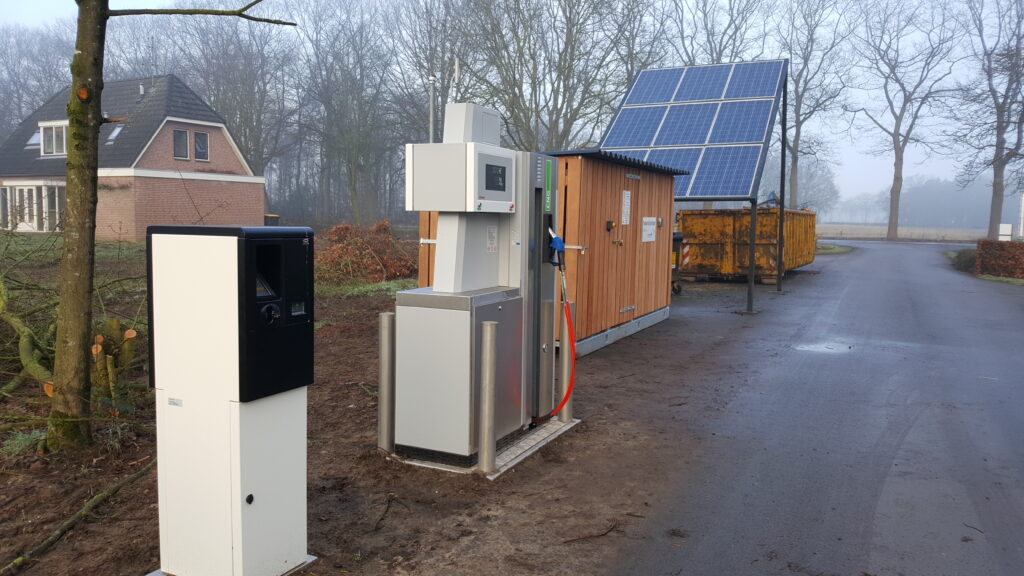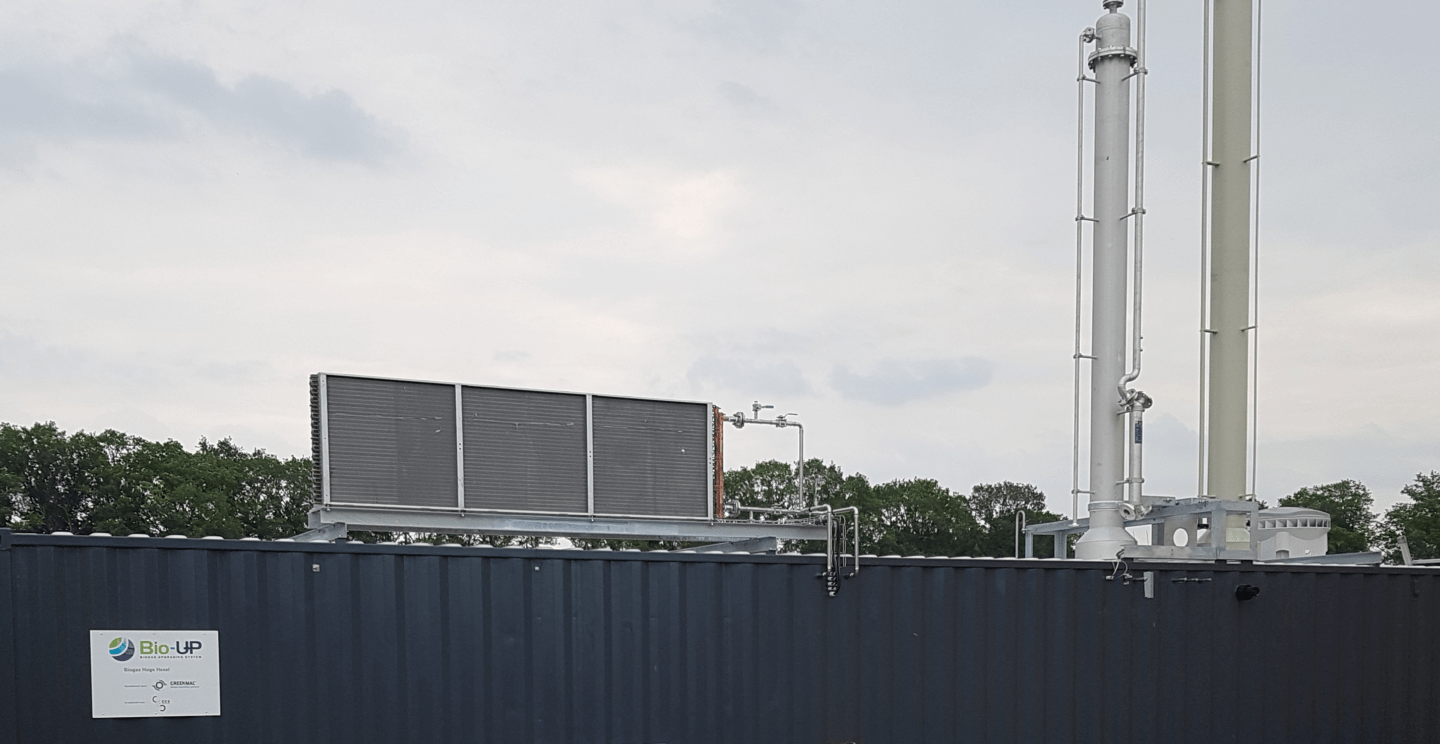Biomethane from the farm with the Bio-UP

The Bio-UP supplies biomethane straight from your farm’s own manure!
You minimize the environmental impact of your company in two ways. Firstly because you produce green gas and secondly because the fermentation process reduces ammonia and methane emissions. This allows you to work on a sustainable and future-proof company.

‘The Bio-UP appears to work well in practice. The first time our gas was supplied to the gas network was a truly special moment!’ -Zwier van der Vegte, KTC De Marke-
What is green gas?
Green gas is in the english language mostly known as biomethane and is created by upgrading biogas until it has the same quality as natural gas. The Bio-Up does this by washing CO₂ and contaminants from the biogas. The methane that remains is then added with substances and gases, until it has the same composition as regular natural gas. This way, the production of green gas is clean and the gas is renewable, unlike natural gas.
In the Netherlands, millions of households use natural gas every day for cooking and heating their homes. Natural gas is also a widely used fuel in industry, horticulture and agriculture. However, the gas supply is not infinite, so the search for sustainable alternatives is necessary. Producing green gas is one such alternative. You can use green gas for exactly the same applications as natural gas.
Difference between biomethane and biogas
Ultimately, we make biomethane from biogas. Biogas is roughly a mixture of methane and carbon dioxide and often comes from fermentation plants for organic waste, sewage sludge or manure and landfill gas from landfills. This gas is purified, dried and brought to the same quality as natural gas. After this processing, we can officially call it ‘green gas’. It is then a sustainable alternative to fossil natural gas and can be connected to the public gas network, regardless of the mixing ratio between natural gas and green gas.
How safe is green gas?
Green gas has the same application as normal natural gas and is therefore just as safe. The network operators in the Netherlands set strict requirements for the quality of the gas that is fed into the network. Both the quality of the gas, but also the condition of the gas network, therefore undergo continuous thorough quality checks. This keeps the green gas flowing through the gas network clean and safe.
But the safety of use of green gas is also tested. For example, green gas is added with a specific odorant (THT). This creates the same recognizable gas smell as is added to natural gas. Installations that upgrade biogas to green gas, such as the Bio-UP, also receive regular checks and are subject to a thorough safety check. This type of green gas installation carries the same risks as a natural gas installation. Fortunately, these risks are very limited.
Certified
Just like green electricity, biomethane is supplied in the Netherlands with a certificate. In the Netherlands, Vertogas issues the ‘Guarantee of Origin’ (GoO) certificates for renewable gas on behalf of the ministry. They check whether the biomethane meets all the strict requirements for such a certificate. This way the customer knows for sure that the biomethane/green gas is really green.
The importance of green gas
Under the European Climate Act, the EU aims to be carbon neutral by 2050. To contribute to this, the Netherlands has set itself the goal of increasing the amount of green gas produced in the Netherlands to 2 billion mᵌ per year in the period 2020-2030. In the Green Gas Roadmap, the cabinet outlines the approach to this plan. The letter mentions that green gas can contribute to the broad prosperity of the Netherlands. But also: which alternative instruments are available to stimulate green gas production and which preconditions we must take into account. For example, innovations, location availability, grid management and raw materials. Finally, the Roadmap describes how green gas can contribute to making end-use sectors more sustainable.
Is biomethane more expensive than natural gas?
Biomethane is currently more expensive than regular natural gas. This is because the supply of biomethane is not yet large-scale. In addition, it has a more intensive production process than natural gas. Subsidies are available for its production, such as the Stimulation of Sustainable Energy Production (SDE++, in the Netherlands). Furthermore, the argument to purchase green energy from a local producer appears to be gaining in sympathy with an increasing number of end users. Although this does not reduce costs, it shows an increasing goodwill to opt for green energy as a matter of principle.
The price difference between natural gas and biomethane can also be explained by the fact that harmful effects of natural gas, such as subsidence and the greenhouse effect, are not included in the gas price.
Green gas as eco friendly fuel


